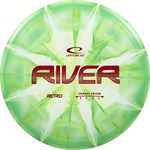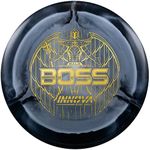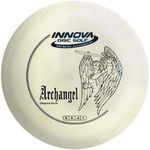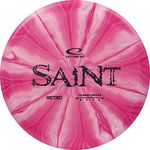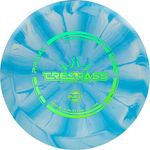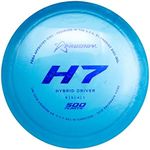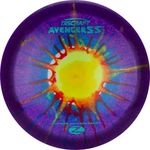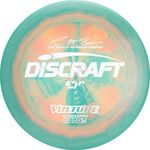Buying Guide for the Best Stable Disc Golf Driver
Choosing the right stable disc golf driver can significantly impact your game. A stable driver is designed to fly straight with a slight fade at the end, making it a versatile choice for many players. When selecting a stable disc golf driver, it's important to consider several key specifications to ensure it matches your playing style and skill level. Understanding these specs will help you make an informed decision and improve your performance on the course.SpeedSpeed is a measure of how fast the disc needs to be thrown to achieve its optimal flight. It ranges from 1 to 14, with higher numbers indicating faster discs. For beginners, a lower speed disc (1-7) is easier to control and requires less power to throw. Intermediate players might prefer a mid-range speed (8-10) for a balance of control and distance. Advanced players often opt for high-speed discs (11-14) to maximize distance, but these require more power and technique to handle properly. Choose a speed that matches your throwing strength and skill level.
GlideGlide measures the disc's ability to maintain loft during flight, with ratings from 1 to 7. A higher glide rating means the disc will stay in the air longer, which is beneficial for achieving greater distance. Beginners and players with slower arm speeds should look for discs with higher glide (5-7) to help them achieve more distance with less effort. More experienced players might prefer a lower glide (1-4) for better control and predictability, especially in windy conditions. Consider your throwing style and the typical conditions you play in when choosing the glide rating.
TurnTurn indicates the disc's tendency to curve to the right (for right-handed backhand throws) during the initial part of its flight. It is rated from +1 to -5, with negative numbers indicating more turn. A disc with a high positive turn (+1) is more resistant to turning and is suitable for powerful throwers who want a straight flight. A disc with a negative turn (-1 to -5) will turn more easily, which can help beginners and players with less power achieve a straighter flight path. Choose a turn rating that complements your throwing power and desired flight path.
FadeFade describes how much the disc will hook left (for right-handed backhand throws) at the end of its flight. Fade ratings range from 0 to 5, with higher numbers indicating a stronger fade. A disc with low fade (0-2) will finish straighter, which is ideal for tight fairways and precision shots. Higher fade (3-5) provides a more pronounced hook at the end, useful for navigating around obstacles or ensuring the disc lands predictably. Consider the typical courses you play and your need for control versus distance when selecting the fade rating.
WeightThe weight of a disc golf driver affects its flight characteristics and ease of control. Discs typically range from 150 to 180 grams. Lighter discs (150-165 grams) are easier to throw and can achieve greater distance with less effort, making them suitable for beginners and players with slower arm speeds. Heavier discs (166-180 grams) offer more stability and control, especially in windy conditions, and are preferred by more experienced players. Choose a weight that matches your strength and the typical playing conditions you encounter.
